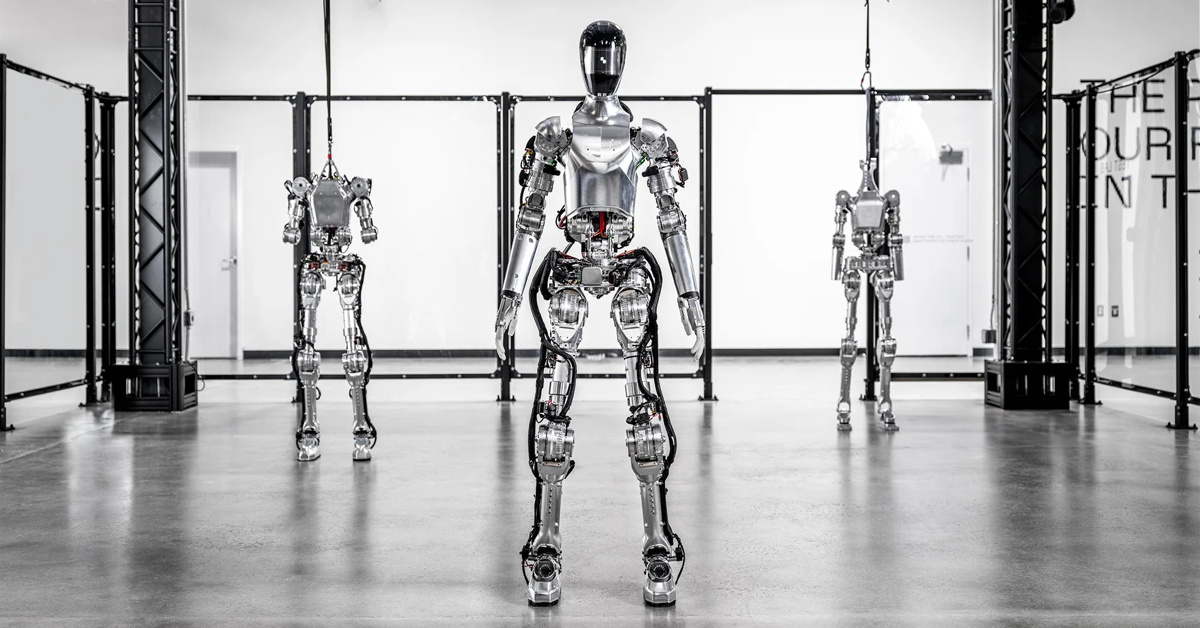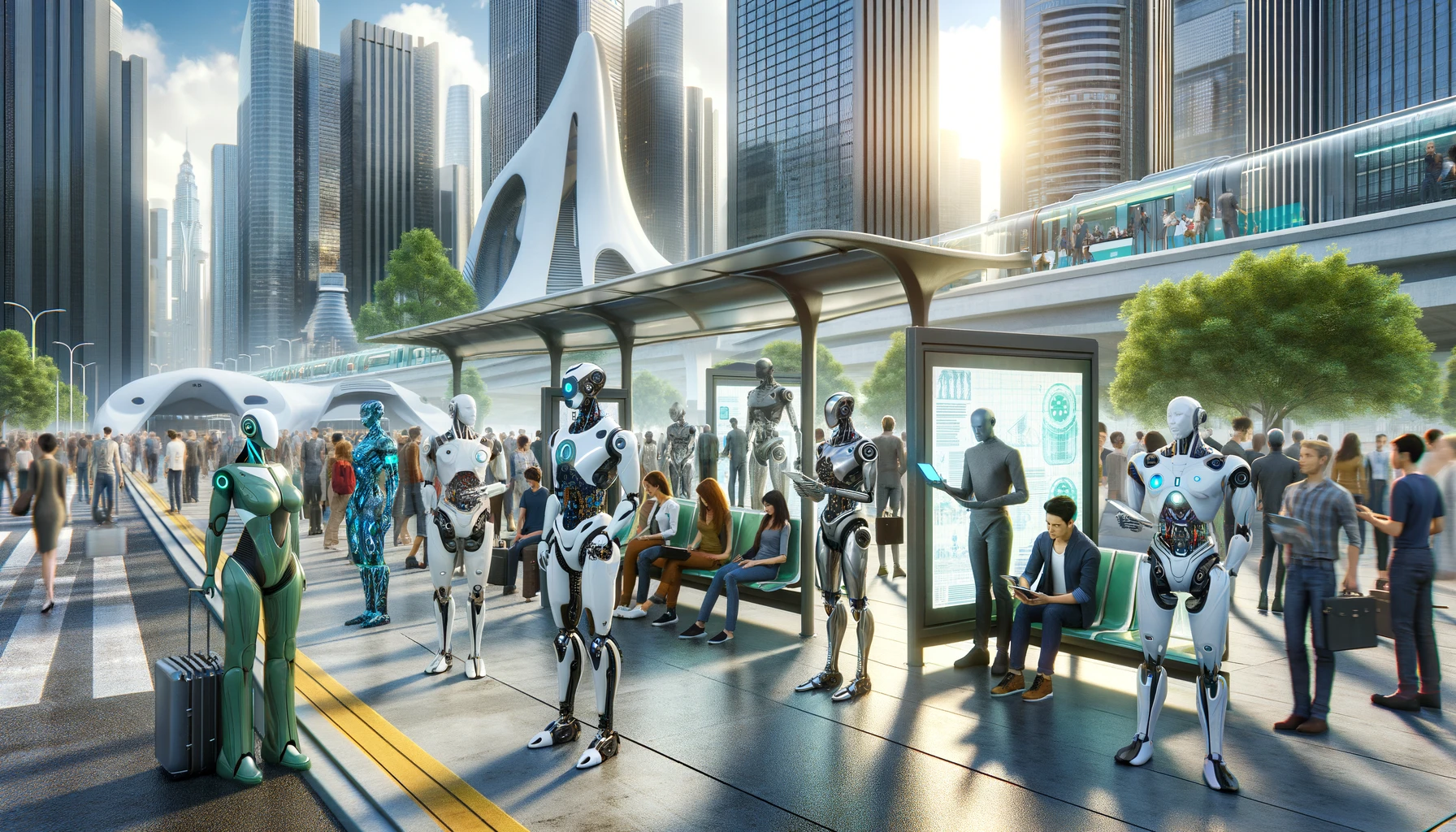
What’s your favorite humanoid robot? Commander Data, C-3PO, Optimus Prime? Regardless, science fiction is now becoming real, and humanoid robots are coming online fast.
As Elon described it when he unveiled Tesla’s Optimus in October 2022:
“It will upend our idea of what the economy is... it will be able to do basically anything humans don’t want to do... it’s going to bring an age of abundance.”
These robots are powered by AI, look humanoid in every aspect, and can physically do the jobs that are dull, dangerous, or dirty.
They and are enabled by the convergence of AI, robotics, sensors, material sciences, high bandwidth communications, and edge computing.
Over the next few blogs in this Age of Abundance series, we’ll explore the arrival and rise of humanoid robots.
Today, I want to go back in time, to the year 2015, and look at a pivotal event that set the current humanoid robot industry in motion.
Let’s dive in…
NOTE: Discussing the latest developments in humanoid robots is a key area of focus at my private Abundance Summit next month. Applications close and we go to Waitlist Only on February 27, 2024. Learn more and apply here.
A Bit of History: The DARPA Robotics Challenge
In March 2011, the Great East Japan Earthquake, a powerful undersea megathrust quake, rocked the Tohoku Region, unleashing a devastating tsunami that surged over the coastal defenses of the Fukushima Daiichi Nuclear Power Plant.
The towering waves crippled the cooling systems of three reactors, leading to catastrophic core meltdowns.
Amidst the chaos, valiant workers scrambled to stabilize the reactors using every method at their disposal: from seawater injection to desperate attempts at venting. Despite their efforts, explosions ravaged the containment buildings.
The aftermath was grim: a widespread release of radiation, mass evacuations, and a profound reevaluation of the nuclear industry's safety measures. It was a disaster that echoed the intrinsic risks of nuclear power, and its legacy continues to shape energy policies and environmental discourse worldwide.
In the aftermath of the Fukushima nuclear disaster, the stark realities of the vulnerabilities humans face during man-made and natural disasters became abundantly clear.
Enter the DARPA Robotics Challenge (DRC).
Established as a direct response to these vulnerabilities, the DRC was an ambitious undertaking aimed at advancing the development of robots capable of assisting humans in the face of daunting challenges.
Fast forward to 2012, the DRC was formally announced to the world, attracting a slew of international interest.
Over 30 intrepid teams converged in Florida between December 20th and 21st, 2013, representing a medley of countries ranging from the US to far-flung regions like Germany, Italy, Japan, and Hong Kong.
Their mission?
To navigate their robots through an intricate obstacle course, mimicking disaster-response scenarios. From driving utility vehicles and traversing rough terrains to breaking through concrete barriers and handling fire-fighting equipment, the tasks were meticulously crafted to reflect real-world challenges.
The grand finale, staged amidst thousands of eager spectators in sunny California, was a spectacle unlike any other. Twenty-three teams, after more than two years of relentless preparation, grappled with an intensified version of their earlier trials. The clock was ticking faster this time; they had under an hour to accomplish what previously took 30 minutes per task.
Amidst the fervor, a South Korean team from KAIST emerged victorious, claiming the coveted $2 million prize. Their robot, an innovative bipedal design with wheels in its knees, elegantly navigated DARPA's gauntlet in under 45 minutes, showcasing an extraordinary blend of agility and intelligence.
However, for many spectators and online viewers, the 2015 Challenge was reminiscent of a comic robot blooper reel. From robots tumbling to those spewing sparks and short-circuiting, the event wasn't short on humorous hiccups.
One particular incident that remains etched in memory was the calamitous fall of Team TRAC Labs' ATLAS robot. As it alighted from its vehicle onto a platform, the robot lost its balance, resulting in a dramatic fall. The aftermath was a poignant sight: a sprawled robot amidst a growing puddle of green hydraulic fluid.
Yet, in the midst of the comedy and chaos, it's paramount to remember the larger picture. As Gill Pratt, DARPA's program manager and the brains behind the DRC, pointed out, the objective was never to immediately deploy these robots for real-world disaster scenarios. DARPA's ethos centers around taking long-term, high-reward risks that catalyze transformative technological advancements.
In this context, the DRC was an unequivocal success.
Far from marking an endpoint, the Challenge was merely the beginning of an audacious journey. As robots continue to evolve, learning from their falls, failures, and missteps, they inch closer to seamlessly working alongside humans in mitigating the harrowing impacts of disasters.
Former DARPA Director Arati Prabhakar encapsulated this sentiment perfectly at the time:
"This is the end of the DARPA Robotics Challenge but only the beginning of a future in which robots can work alongside people to reduce the toll of disasters.”
Why This Matters
Since the DARPA Robotics Challenge Finals back in 2015, we’ve seen incredible progress towards the goal of developing fully functional humanoid robots.
The narrative surrounding humanoid robots has been overwhelmingly positive, with companies like Tesla's Optimus, Figure 01, and Ameca (by Engineered Arts) showing us the possibilities that await.
But what’s driving all of this recent progress?
That’s the subject of the next blog in this series.
70% of all cancers that are fatal turn out to be the result of cancers that are not routinely tested for by today’s medical system. Today, advanced diagnostics are able to evaluate your health on a regular basis, with the goal of finding disease at the earliest stage possible. Every year, I go through a Fountain Life “upload” as part of their APEX Membership program, and I urge you to do the same. Get started with Fountain Life and become the CEO of your health:
I discuss the latest developments in biotech and longevity science on my podcast. Here’s a conversation I recently enjoyed:
A Statement From Peter:
My goal with this newsletter is to inspire leaders to play BIG. If that’s you, thank you for being here. If you know someone who can use this, please share it. Together, we can uplift humanity.
Topics: Abundance Entrepreneurship Abundance 360










